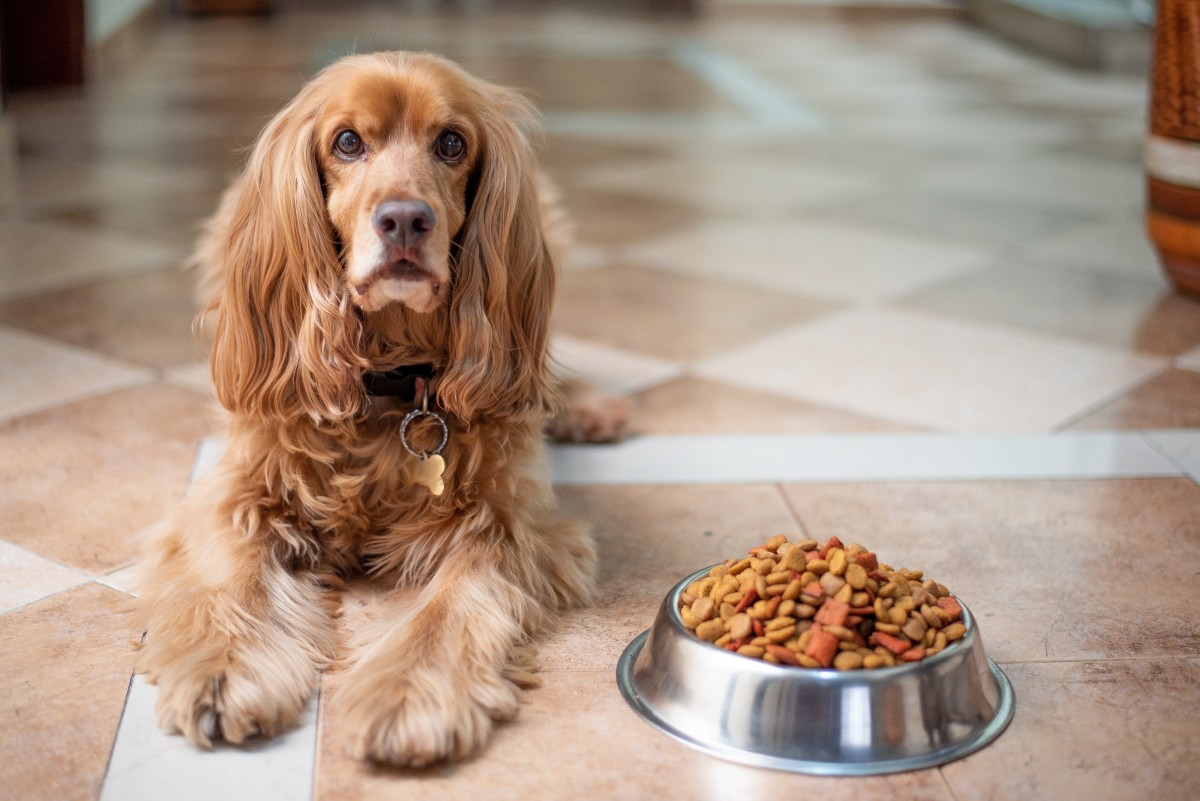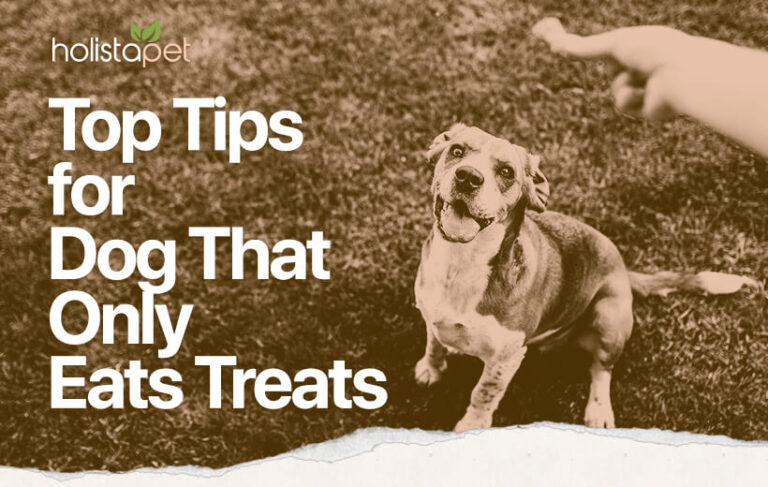If your dog won’t eat his food but will eat treats, it may be due to pickiness, dental issues, or a medical problem. It’s important to consult with a veterinarian to rule out any health issues and to find a suitable solution for your dog’s eating habits.
Many dog owners have experienced the frustration of their beloved pet refusing to eat their regular food while readily accepting treats. This behavior can be concerning and may be a sign of an underlying problem. We will explore the possible reasons why your dog is exhibiting this behavior and provide practical tips on how to encourage your dog to eat his regular meals.
By understanding the potential causes and implementing appropriate strategies, you can help ensure that your dog maintains a healthy and balanced diet.
Identifying A Picky Dog
Signs your dog might be a picky eater
Common behaviors of a selective eater include refusing to eat their regular food, but readily consuming treats. Some dogs may show disinterest in their meals, take longer to eat, or exhibit specific eating habits like only eating when their owner is present. Additionally, a picky dog may be more interested in human food rather than their own. It’s important to observe your dog’s eating habits to determine if they are simply being picky or if there may be an underlying health issue affecting their appetite.
Reasons Dogs Prefer Treats Over Food
Many dogs seem to have a preference for treats over regular food. This could be due to the taste and aroma differences between treats and regular food. Treats often have a stronger scent and flavor that appeal to dogs. Additionally, psychological factors can also play a role in their eating habits. Dogs may associate treats with reward and positive reinforcement due to conditioning, making them more likely to choose treats over regular food. Providing a balanced diet and ensuring the regular food is appealing to the dog’s senses can help address this eating behavior.
Ruling Out Health Concerns
It’s important to rule out health concerns when a dog won’t eat his food but will eat treats. A vet checkup is crucial to identify any medical issues that affect appetite. Certain conditions such as dental problems, gastrointestinal disorders, or infections could be causing the eating behavior. Moreover, underlying health issues like kidney disease or liver problems may also impact a dog’s appetite. Additionally, it’s essential to consider any recent changes in the dog’s routine, environment, or diet that could be contributing to the eating habits. By consulting with a veterinarian, you can address any potential health issues and ensure the well-being of your pet.
Creating A Healthy Eating Environment
Creating a healthy eating environment for your dog is essential for ensuring that they eat their food consistently. The impact of feeding time routines can significantly influence your dog’s appetite and eating habits. Establishing a quiet, distraction-free eating area can help your dog focus on their food and encourage them to eat their meals regularly. Providing a comfortable and safe space for feeding can reduce any anxiety or stress your dog may experience during mealtimes. Consistency in feeding times and eliminating any potential distractions can also improve your dog’s eating behavior and promote a healthy diet.
Importance Of Food Quality And Variety
Assessing the nutritional value of your dog’s current diet is essential to ensure it meets the necessary nutritional requirements. Look for high-quality ingredients with a balanced ratio of protein, carbohydrates, and fats. Variety in a dog’s diet can stimulate their appetite, making mealtime more enticing. Incorporating different protein sources such as chicken, beef, or fish can add diversity to their meals. Rotating between wet and dry food can also provide novelty. Additionally, incorporating healthy treats that are nutritious and free of harmful additives can supplement their diet and encourage healthy eating habits. Adding vegetables and fruits as occasional meal toppers can provide additional nutrients and flavor.
Gradual Diet Changes
Introducing new foods slowly to the diet: When your dog refuses to eat his regular food, it may be helpful to introduce new foods gradually. This can be done by mixing a small amount of the new food with his regular food, gradually increasing the ratio of new to old food over time. This approach allows your dog to acclimate to the new food without causing digestive upset. Mixing treats with regular food: A step-by-step guide: To encourage your dog to eat his regular food, try mixing in small amounts of his favorite treats. Begin by adding a small portion of treats to his food and gradually decrease the amount of treats as he becomes more accustomed to eating his regular food. This method can help transition your dog back to his regular diet while still providing the familiarity of treats.
Enhancing Food Appeal
Enhancing Food Appeal – If your dog is refusing to eat its food but happily munches on treats, you’re not alone. Here are a few tips for making your dog’s food more enticing:
- Introduce variety: Mix in small amounts of lean meats, vegetables, or fruits to the regular dog food.
- Use food toppers: Sprinkle small amounts of low-sodium broth, yogurt, or cottage cheese on top of the food.
- Trial homemade recipes: Experiment with homemade food options to see if your dog responds better to them.
- Consider store-bought alternatives: Look for high-quality, nutritious options if homemade recipes aren’t practical for you.
- Stay consistent: Dogs may test boundaries, so it’s essential to stick to a routine feeding schedule and avoid offering treats excessively.
Positive Reinforcement Techniques
When dealing with a dog that refuses to eat its food but readily consumes treats, positive reinforcement techniques can be highly effective. Praise and affection play a crucial role in encouraging your dog to eat. When your dog shows interest in its food, shower it with verbal praise and physical affection. Keep the mealtime environment calm and relaxed, creating a positive association with the food. Additionally, incorporate treats as a reward for eating its regular meals, reinforcing good behavior. Through consistent application of these techniques, you can train your dog to enjoy mealtime again.
Establishing A Feeding Schedule
Consistency in feeding times helps regulate a dog’s digestive system and prevents erratic eating habits. It establishes a sense of routine and aids in training. Additionally, a consistent schedule can help monitor the dog’s appetite and detect any possible health issues. By setting a fixed time for meals, dogs learn when to expect food, making them more receptive to their regular diet.
A consistent feeding routine reduces anxiety and creates a calm environment for the dog during meal times. It also cultivates healthier eating habits and eliminates the need for excessive treats. This routine fosters better digestion and assists in weight management, providing controlled portions at set meal times.
How often and how much to feed a picky eater
For picky eaters, it’s essential to stick to a regular feeding routine to establish a pattern. It’s advisable to provide two meals per day, offering the recommended portion size for the dog’s breed and size. Avoid overfeeding and limit treats to reserve the dog’s appetite for its main meals.
When To Consult A Professional
Recognizing the need for professional training assistance, especially with regard to a dog’s nutrition, is crucial if your dog is refusing to eat its food but will eat treats. If your dog’s refusal to eat persists, seeking advice from a dog nutritionist is paramount. Consulting a professional becomes necessary when your dog’s eating habits begin to affect its health and well-being.
Long-term Strategies For Picky Eaters
It’s important to prioritize a sustainable approach to feeding for dogs that won’t eat their food but will eat treats. One key strategy is to gradually introduce new foods and flavors to their diet, allowing them to develop an openness to a wider range of options. Additionally, balancing treats with nutrition is crucial for their lasting health. This might involve integrating small portions of treats into their regular meals or choosing healthier treat options. By consistently offering a variety of nutritious foods and minimizing reliance on treats, a more balanced and sustainable feeding approach can be established.

Credit: pethelpful.com
Frequently Asked Questions For Dog Won’t Eat His Food But Will Eat Treats
Why Is My Dog Not Eating His Food But Will Eat Treats?
Sometimes dogs may refuse their regular meals due to stress, dental issues, or picky eating habits. Offering high-value treats could be more appealing, but it’s important to address any underlying health concerns and create a consistent feeding routine. Consult your vet for guidance.
What Can I Do If My Dog Refuses To Eat His Food?
Try mixing in a small amount of wet food or warm water to enhance the aroma and flavor of the kibble. Keeping mealtimes consistent, providing regular exercise, and minimizing distractions during feeding can also help improve your dog’s appetite and eating habits.
Is It Harmful If My Dog Only Eats Treats And Not His Food?
Relying solely on treats can lead to nutritional imbalances and health issues. It’s important to encourage your dog to eat balanced meals to ensure they receive essential nutrients. Consult a veterinarian if your dog consistently refuses their regular food in favor of treats.
Conclusion
Understanding your dog’s eating habits is crucial for their overall health and well-being. If your dog is refusing their food but eagerly accepting treats, it’s important to address any underlying issues and establish a balanced diet. Consult with a veterinarian to rule out any medical concerns and consider training techniques to encourage healthy eating habits.



